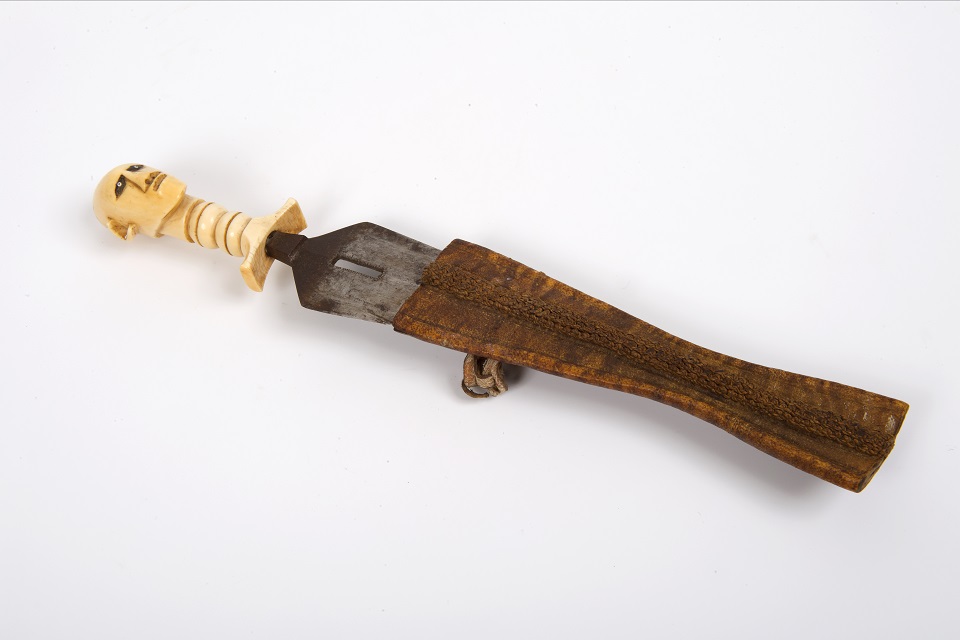Record details
| Knife | |

|
|
|
Ivory handled knife with head of a woman made by the West African Mangbetu tribe. The elongated head of the woman depicted on the handle represents the practise of Lipombo, reshaping the skull by binding. |
|
| Northampton Museum and Art Gallery | |
| 1800-1900 | |
| Central Africa, now the Democratic Republic of the Congo | |
| Ivory, metal, leather and organic material | |
|
This knife was made by the Mangbetu society in West Africa. One of the richest tribes in Africa, they controlled the ivory trade and decorated both everyday and ceremonial objects. They governed a society that was both organised and affluent. Wealth and status were displayed through the fine decoration on many of the Mangbetu practical possessions. Most of the tools used for work were decorated, and some were worn as ornaments first and relegated to work tools when they were old. Artisan makers were highly revered and held high rank with the society of the Mangebetu. Blacksmiths often became rich men because families would bring them their daughters to marry with the expectation of receiving iron and ironworking services as bride wealth. The ivory carvers who produced the figurative heads found on daggers held very high status. The style of decoration of this knife can be traced back to the ruler Chief Okondo and high ranking artisans in 1879. Researched as part of the Knowledge of the unseen project. |
|
| Not on display |
